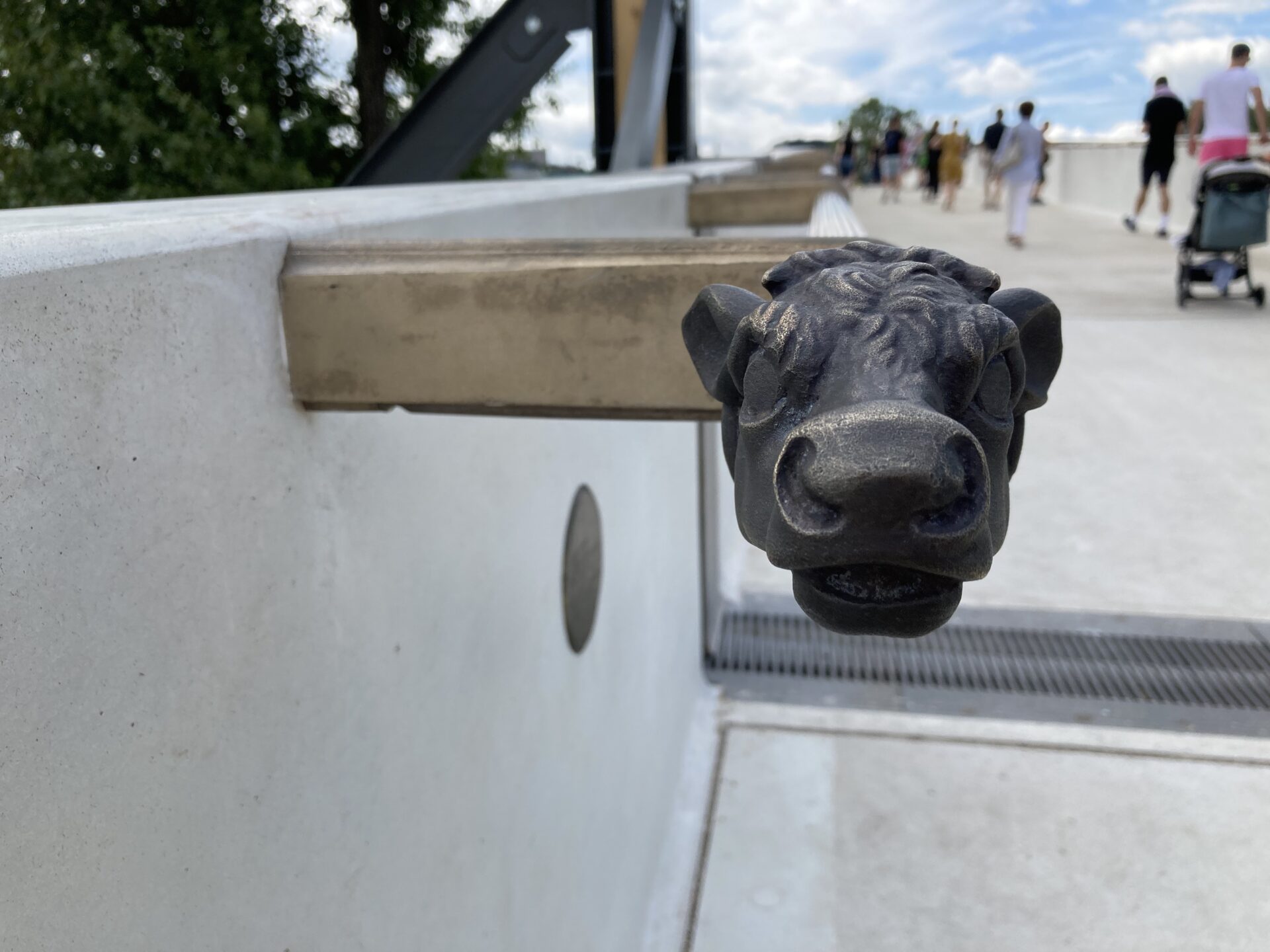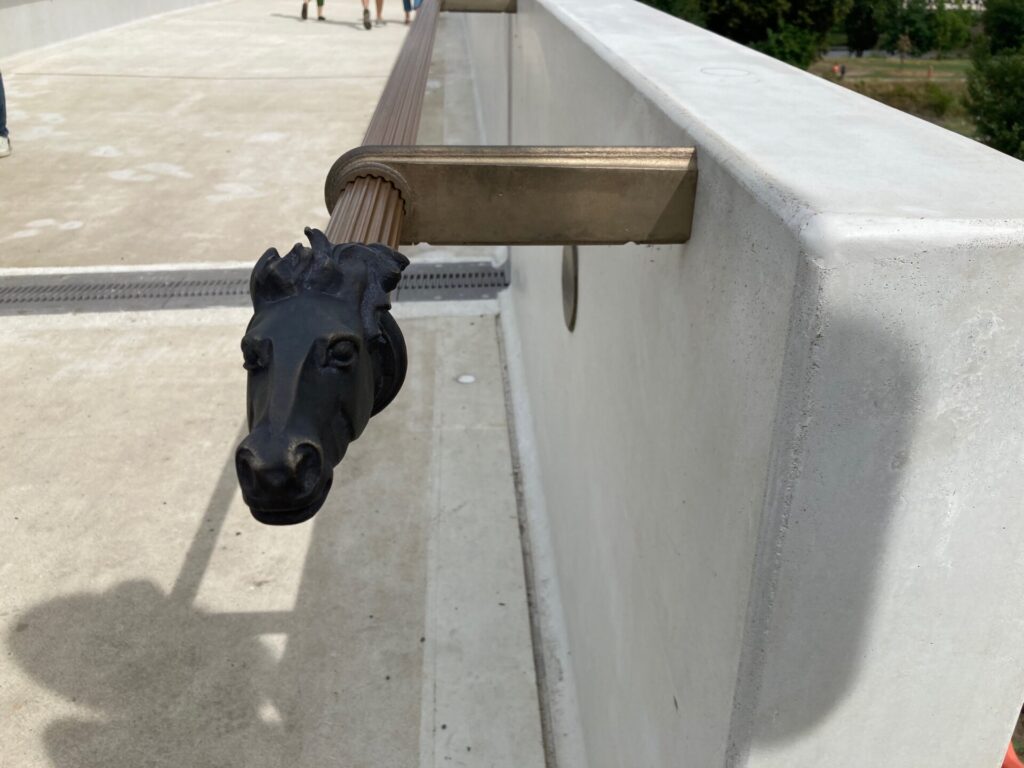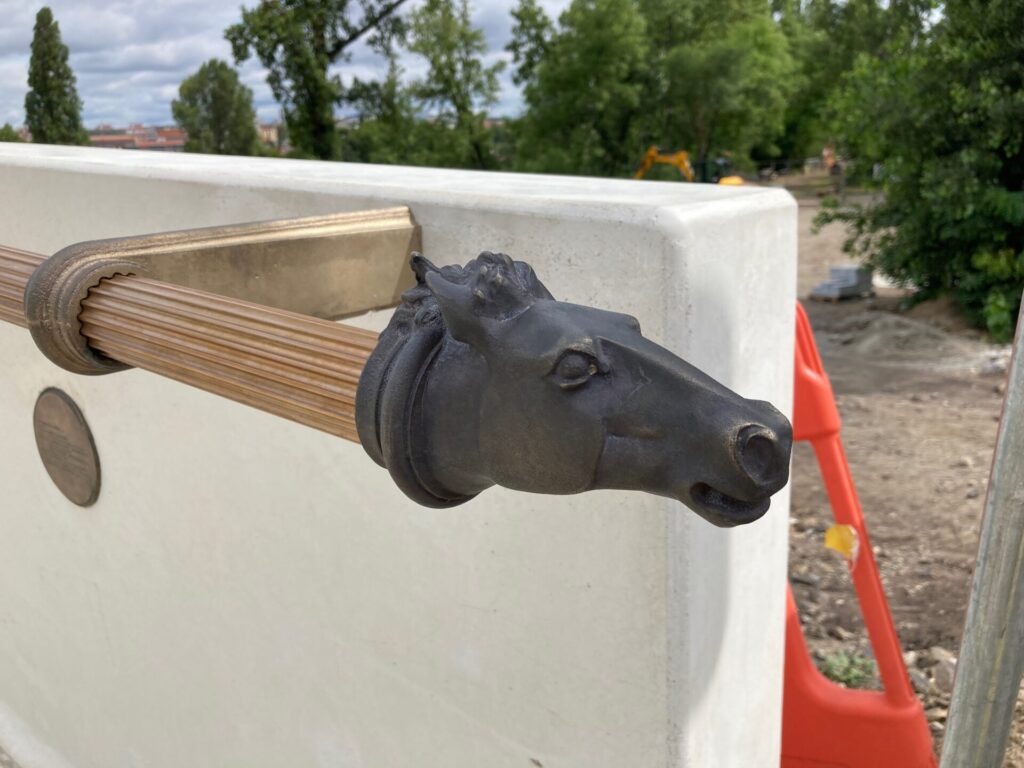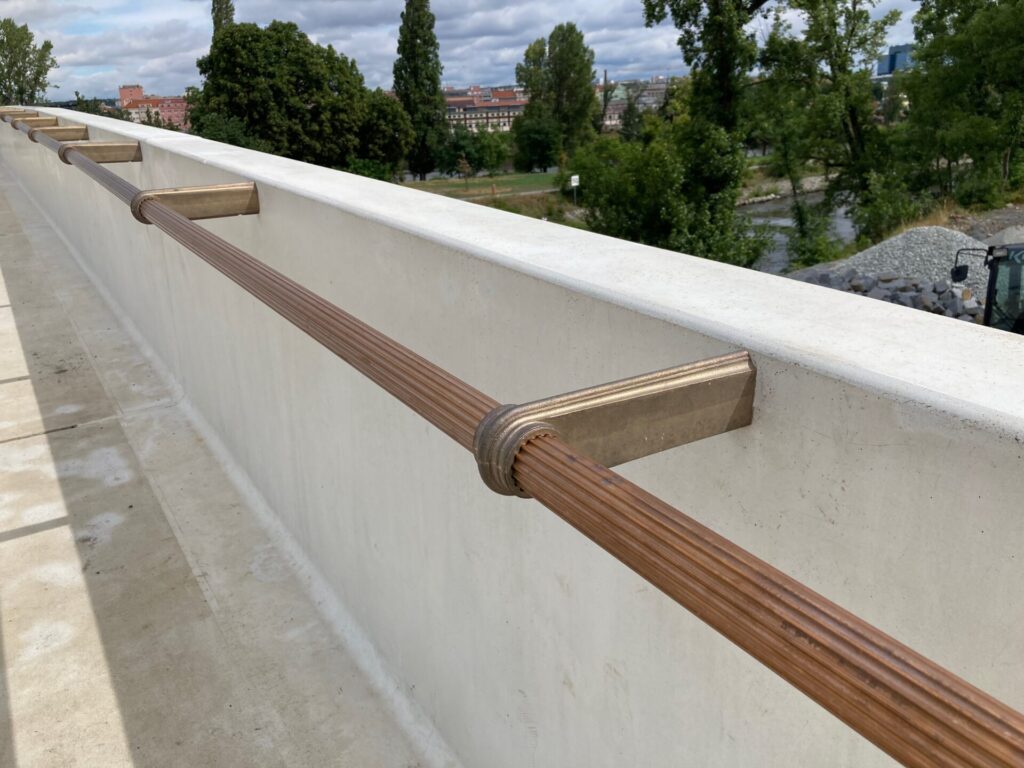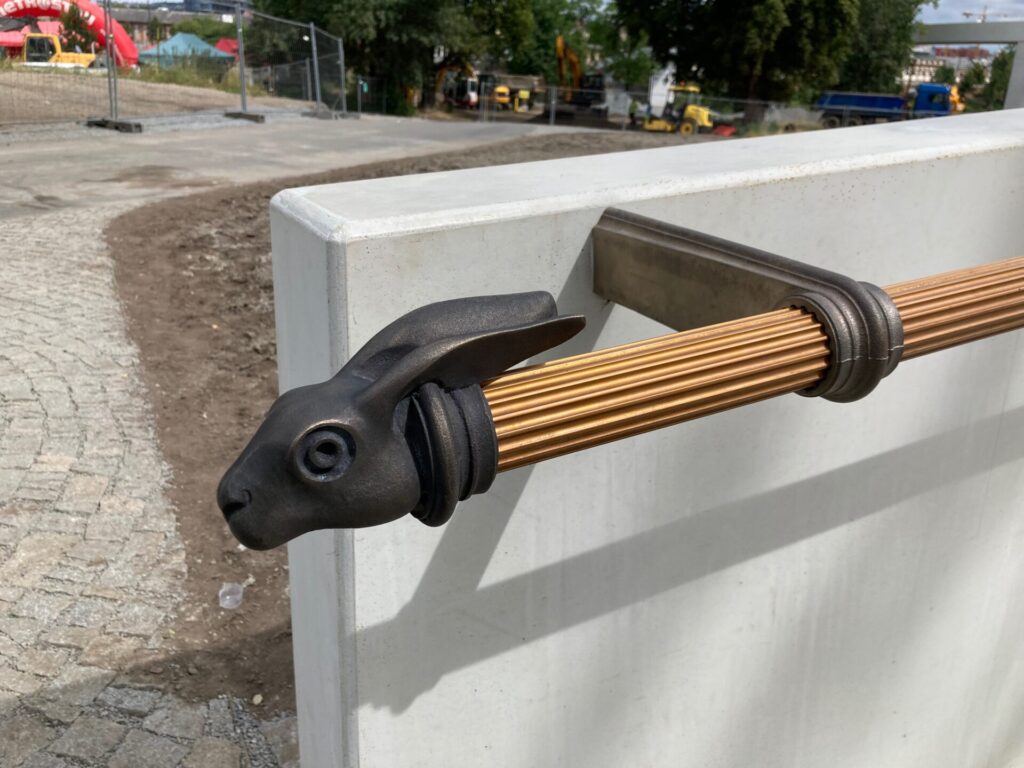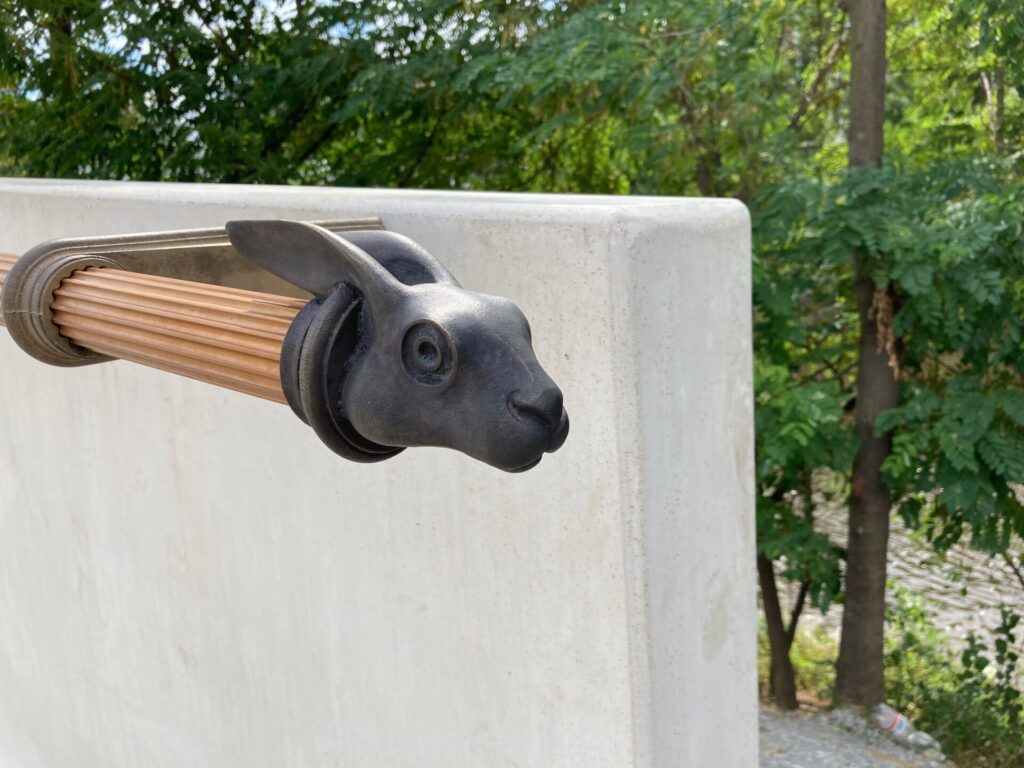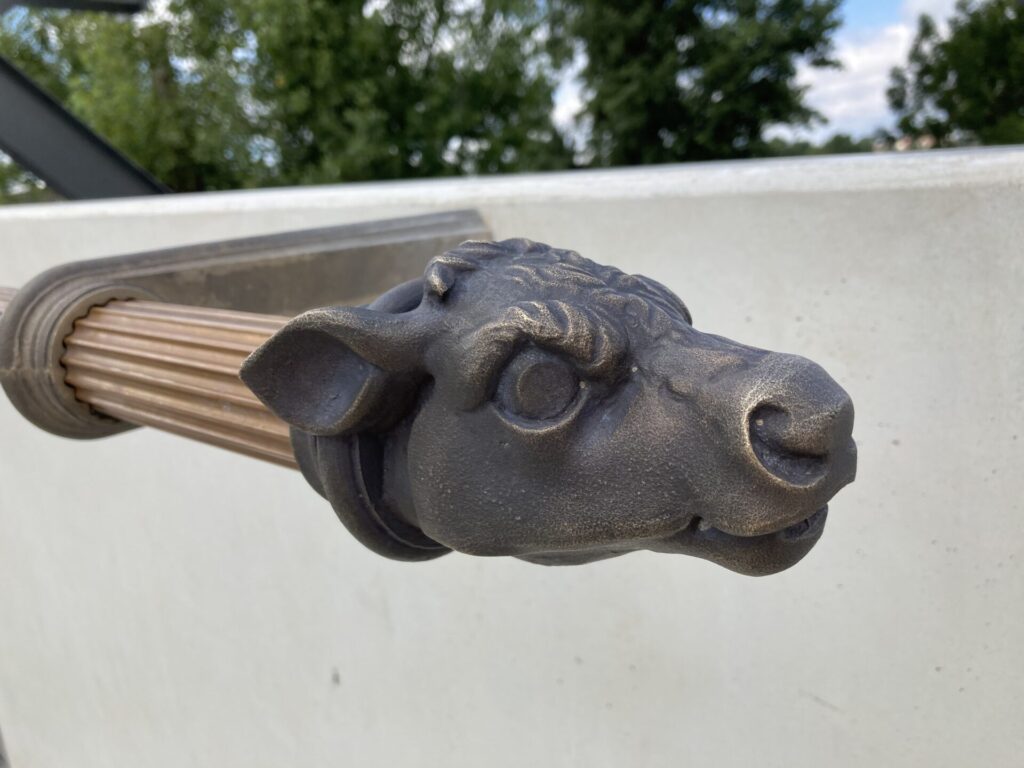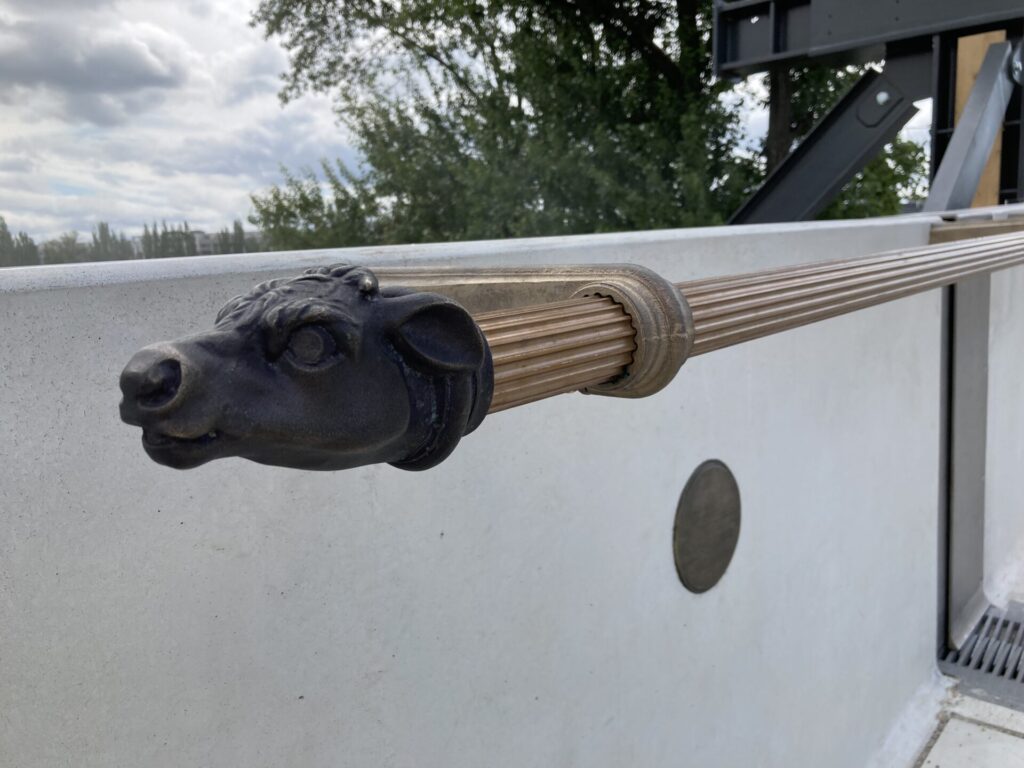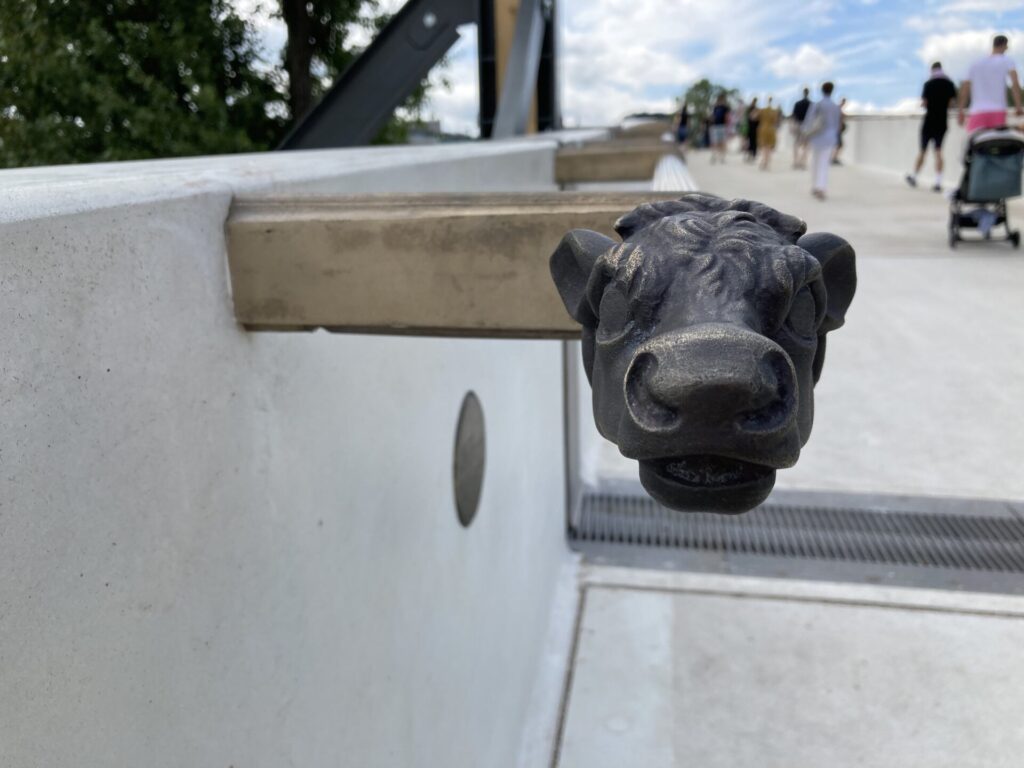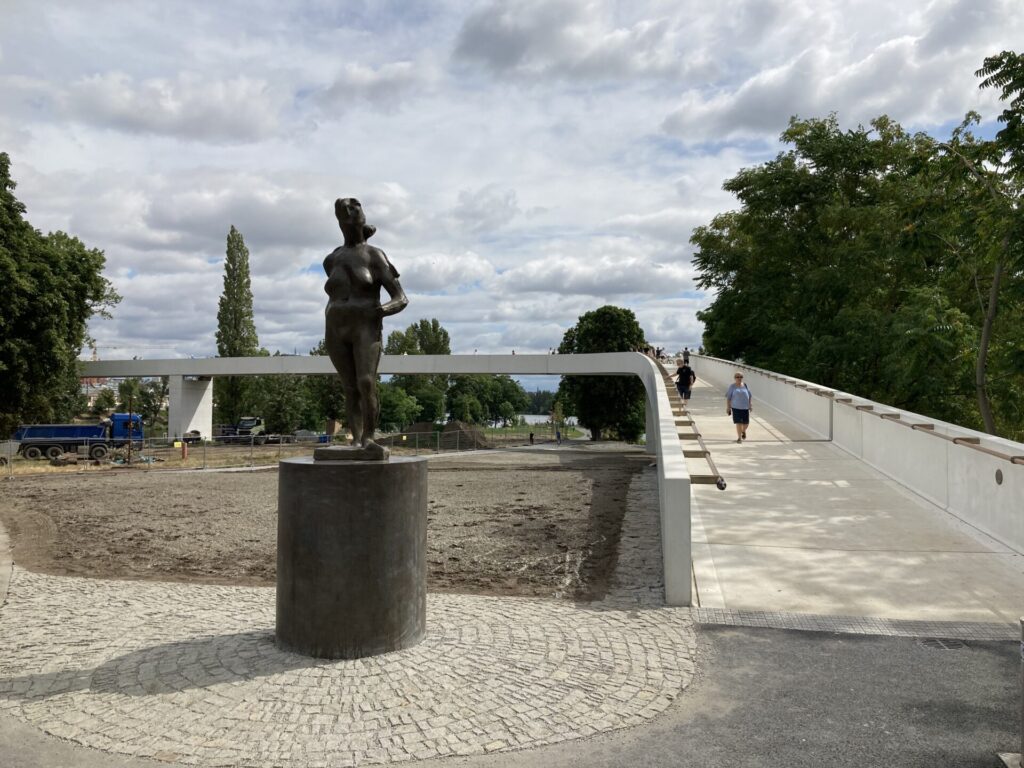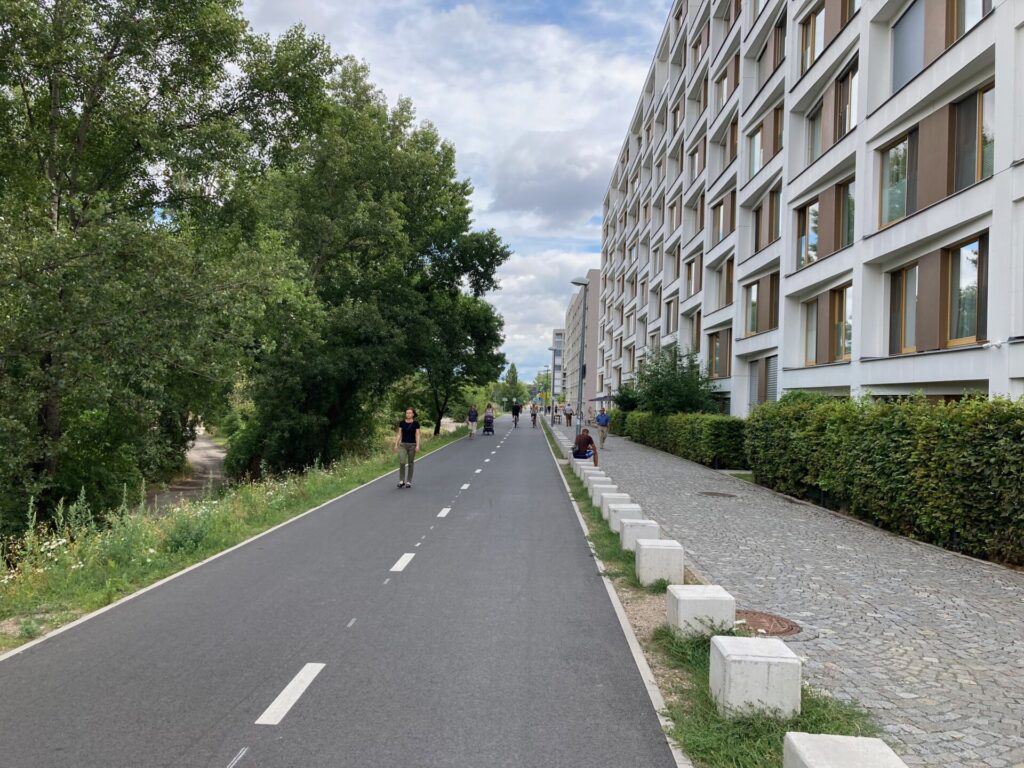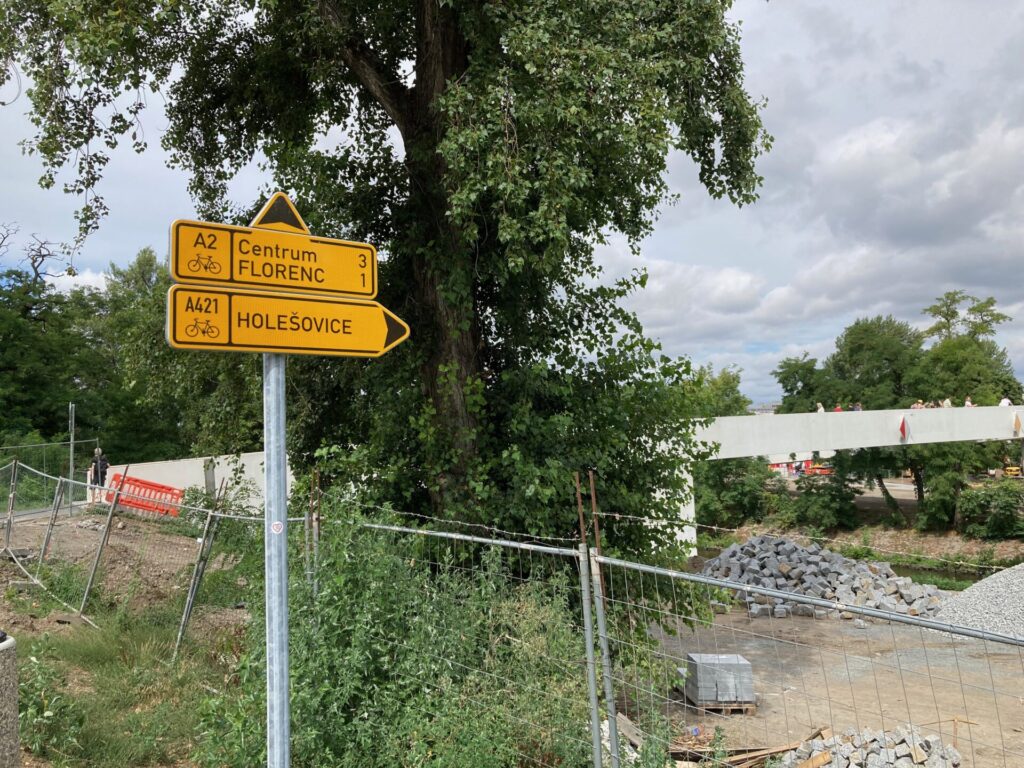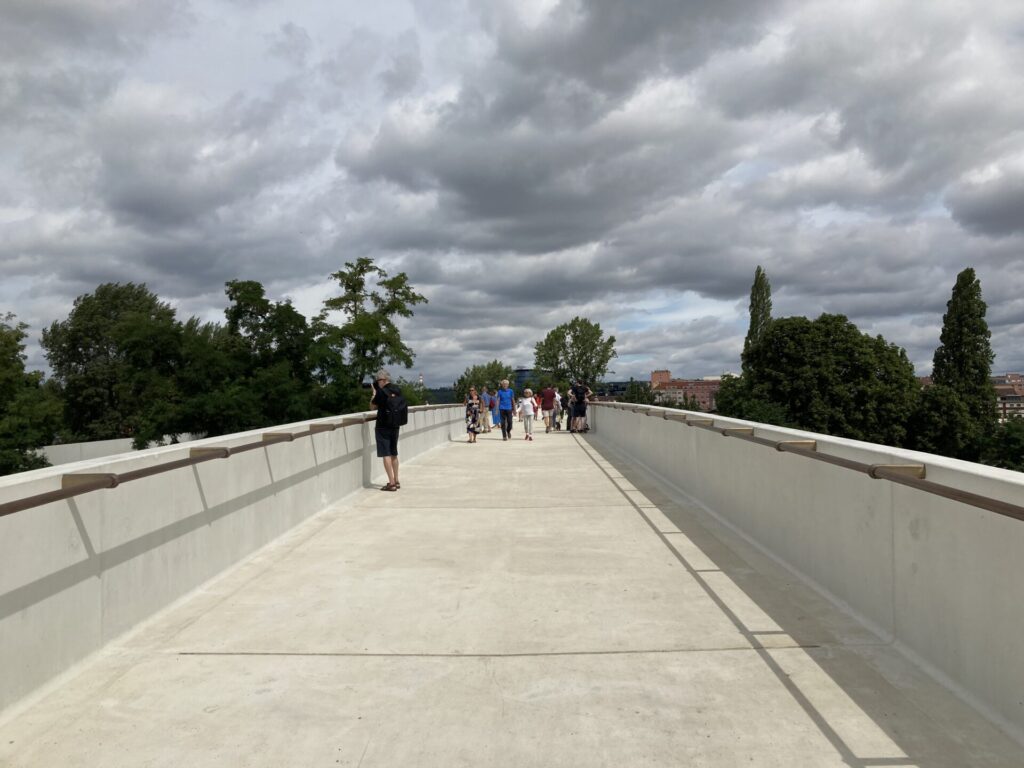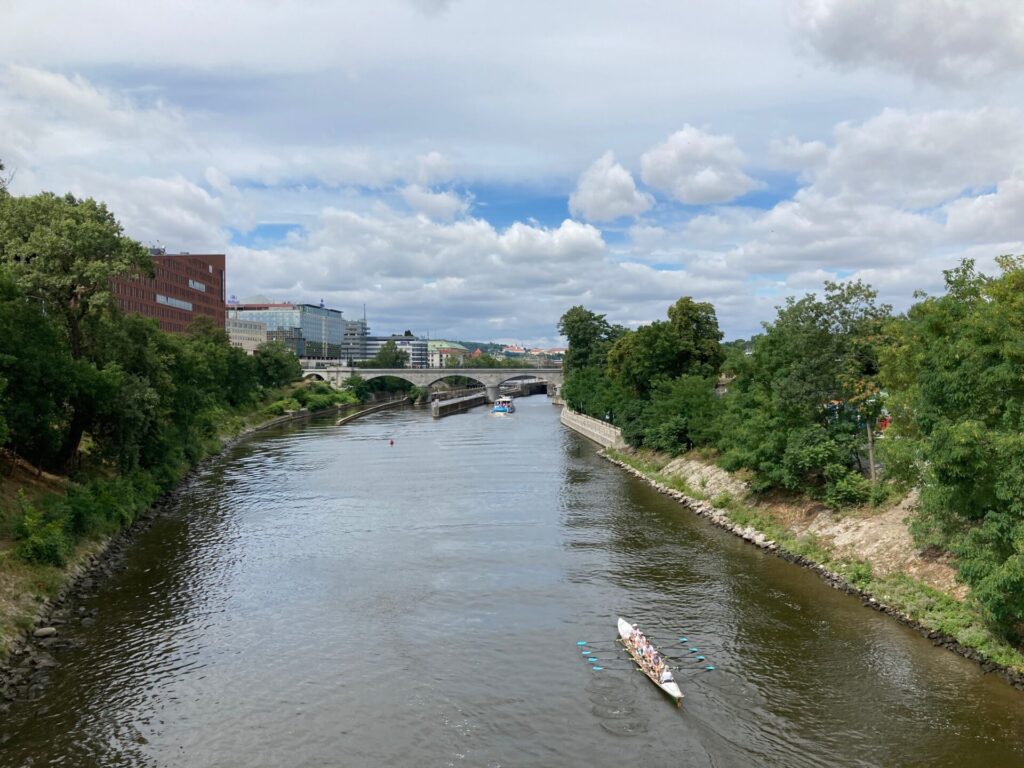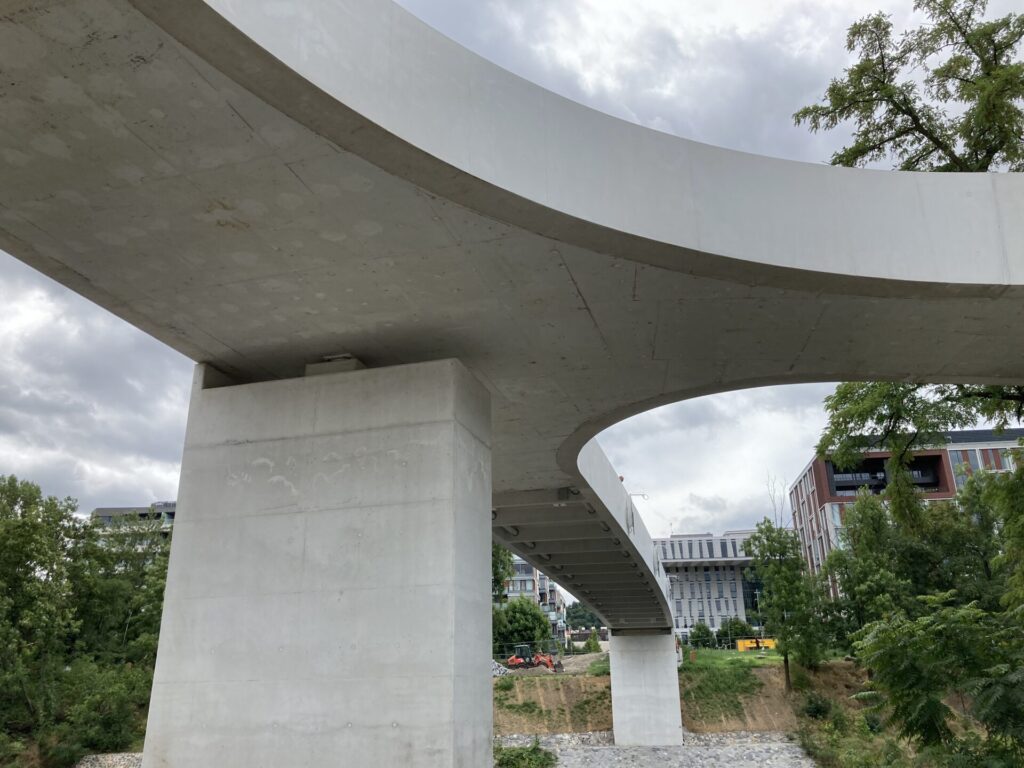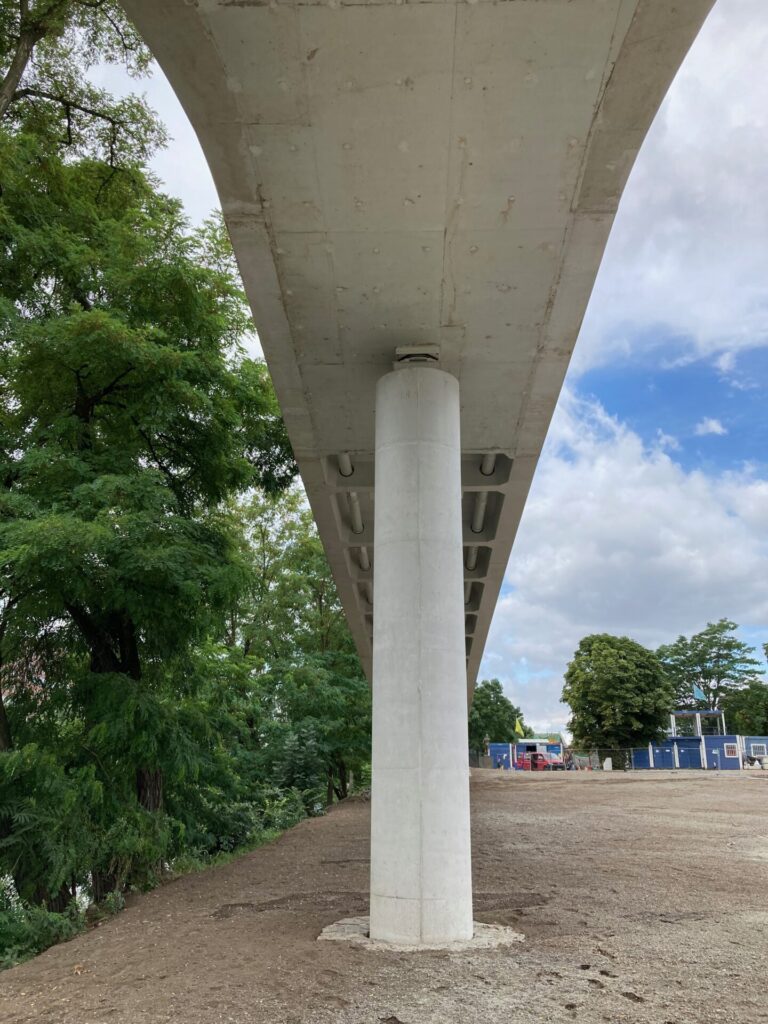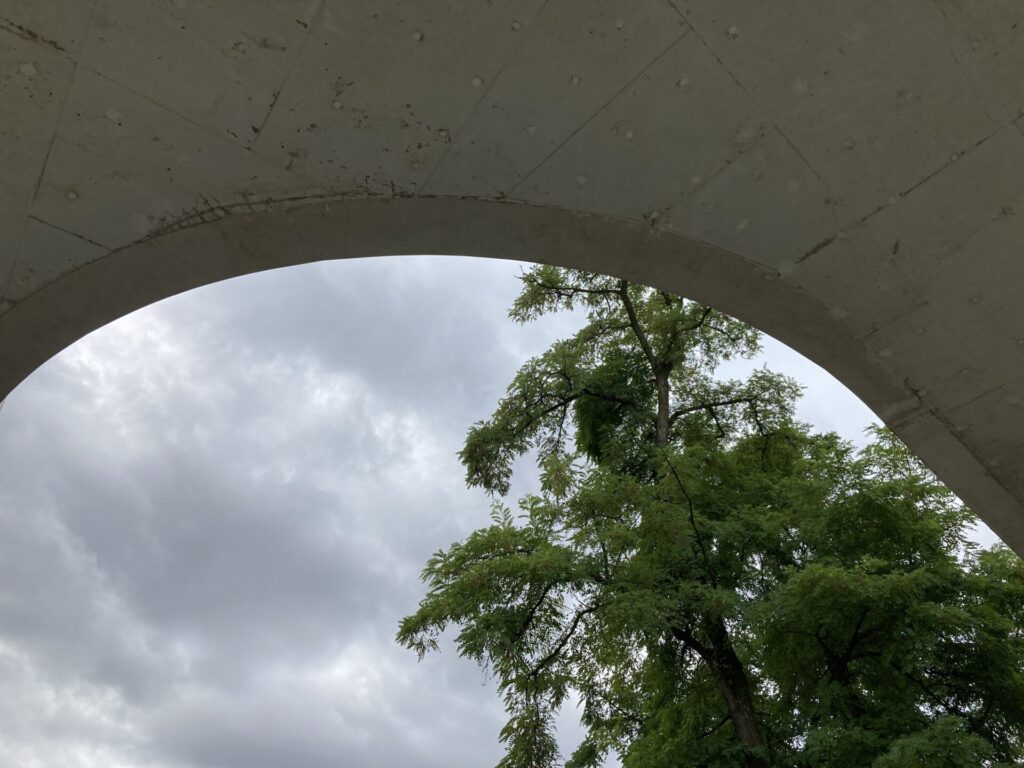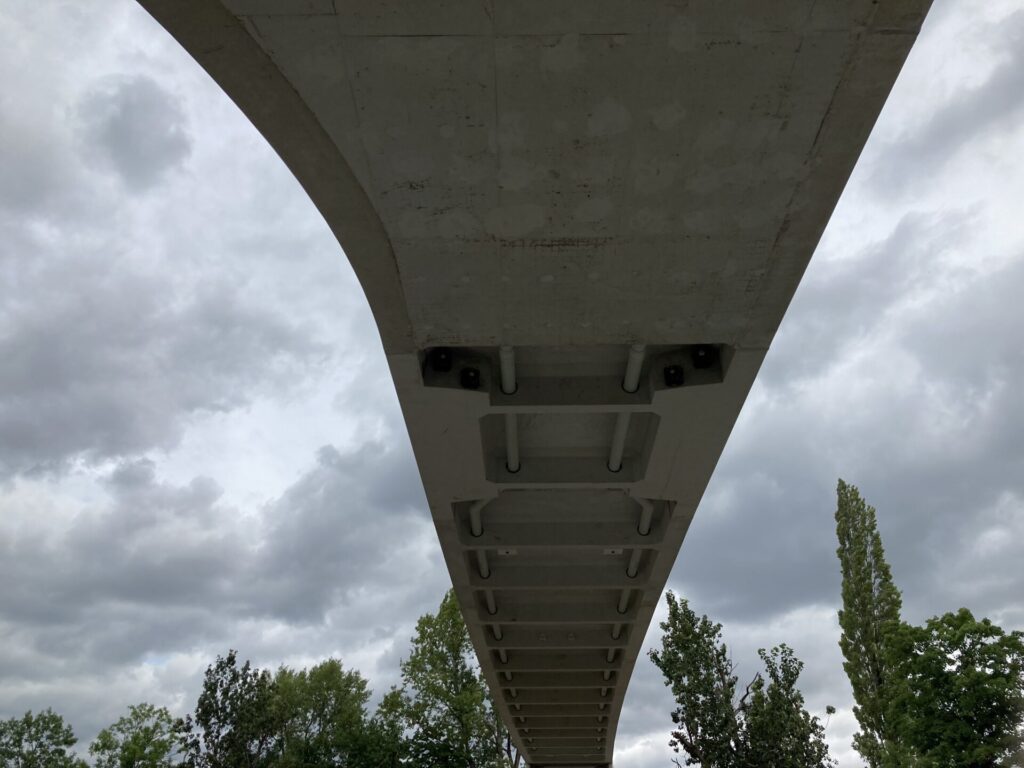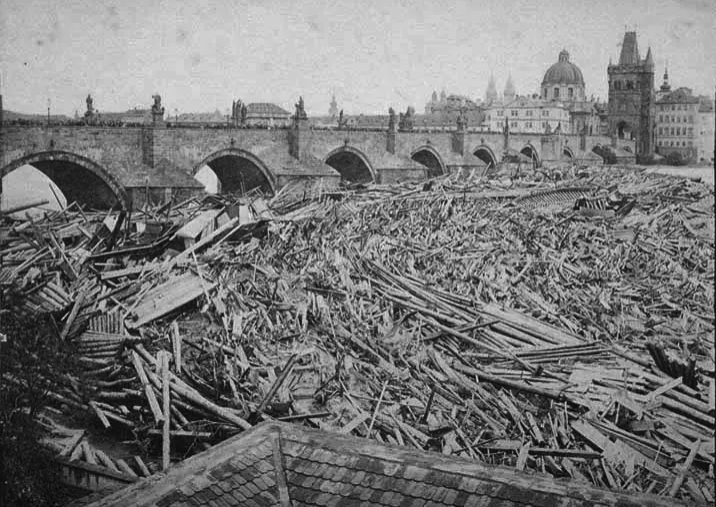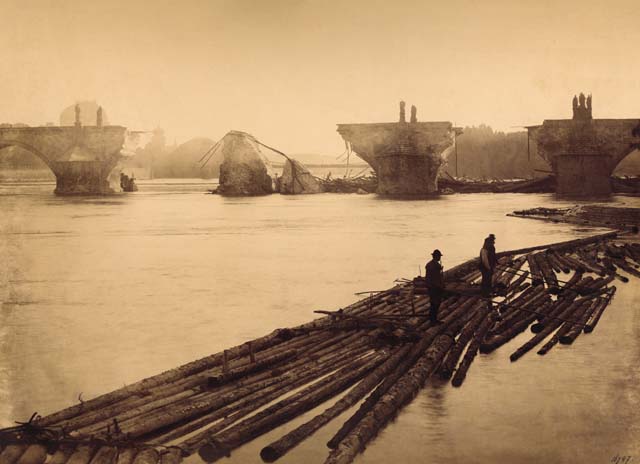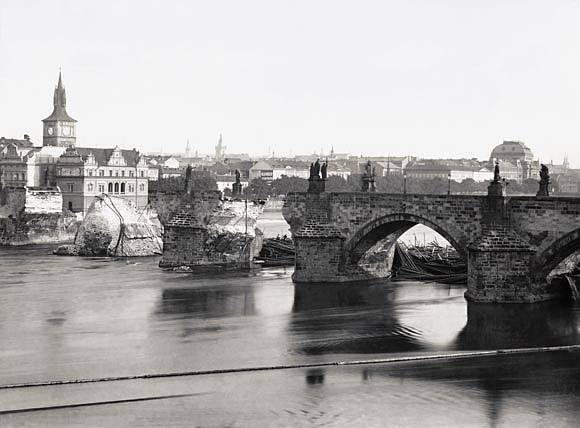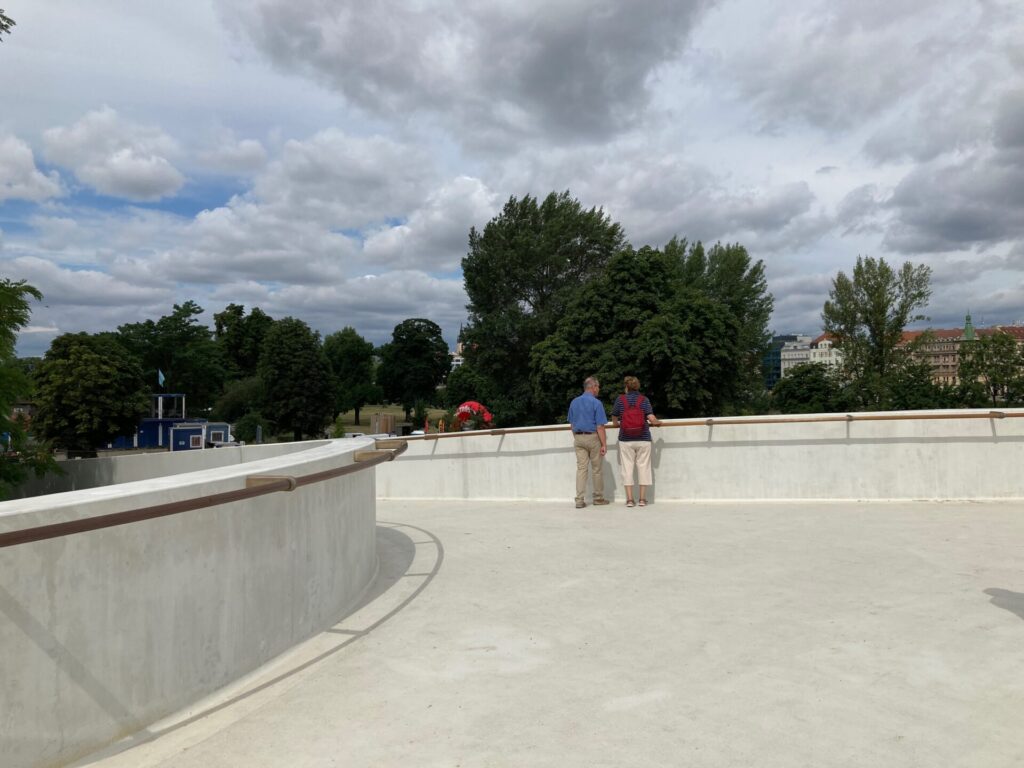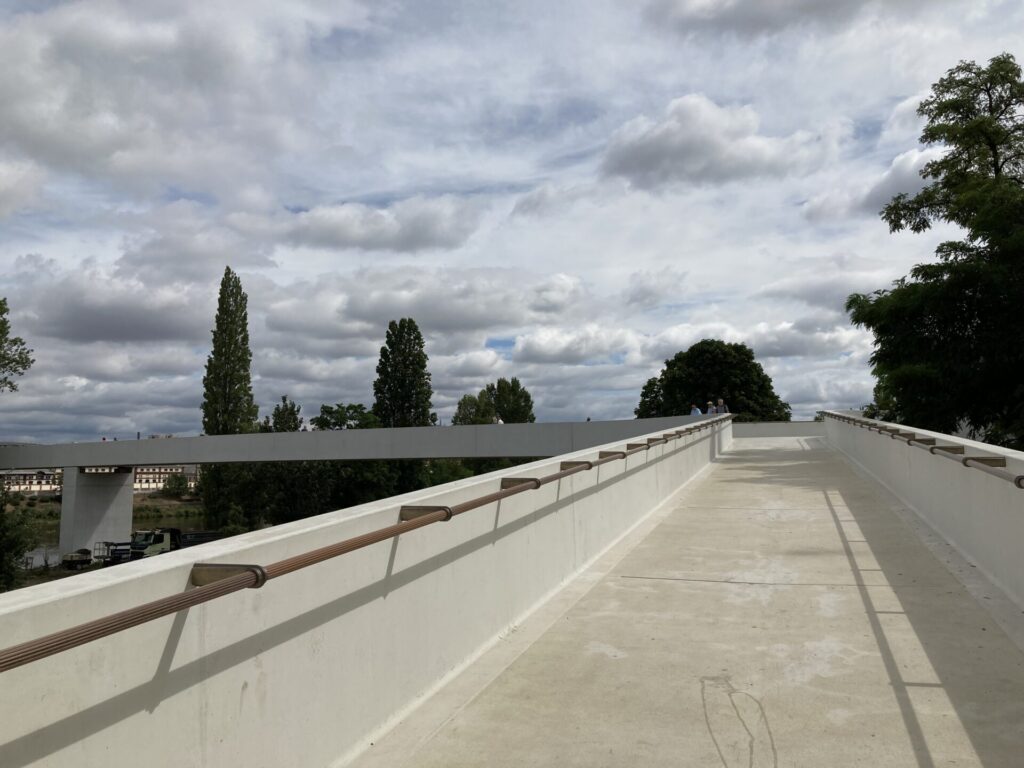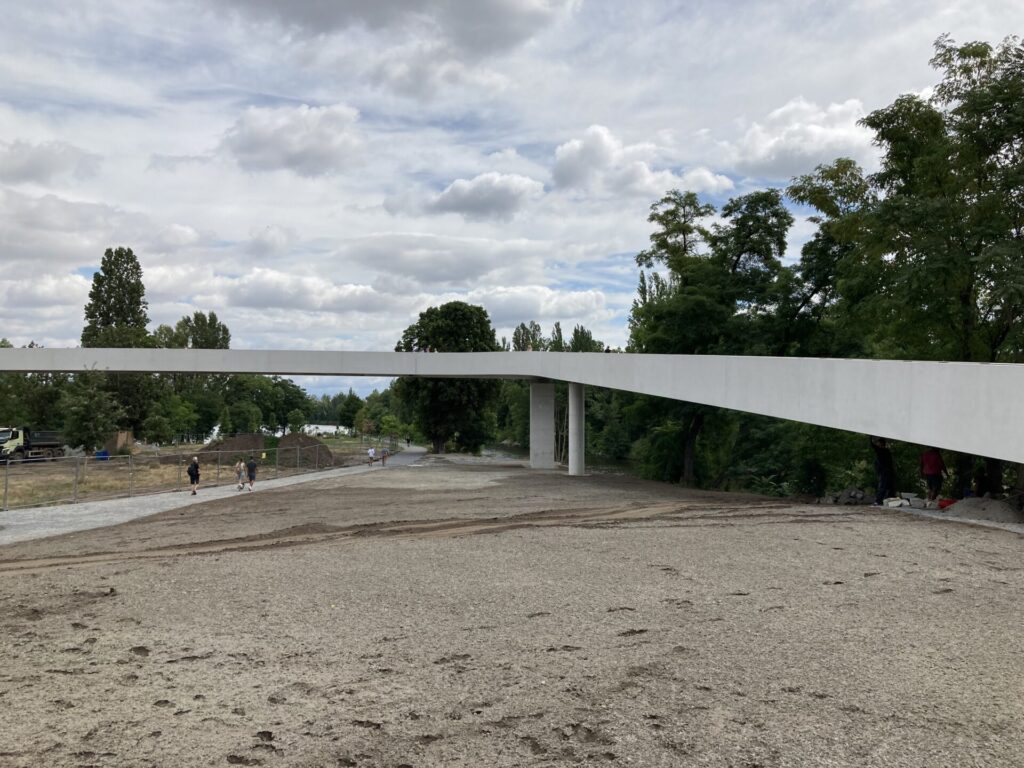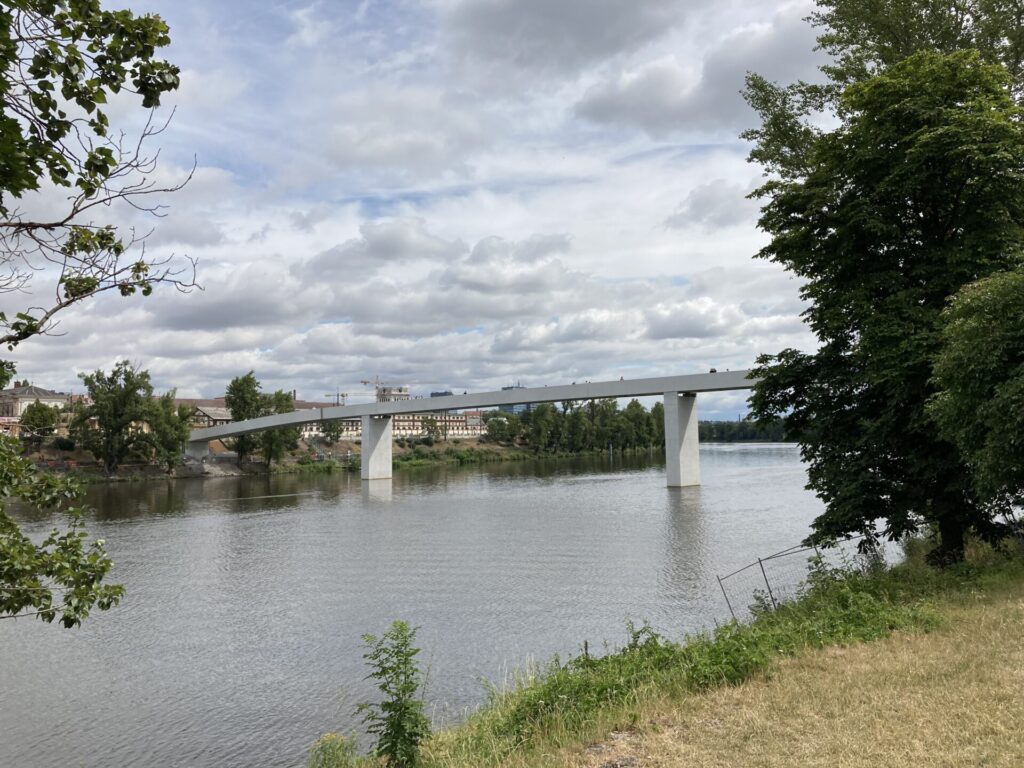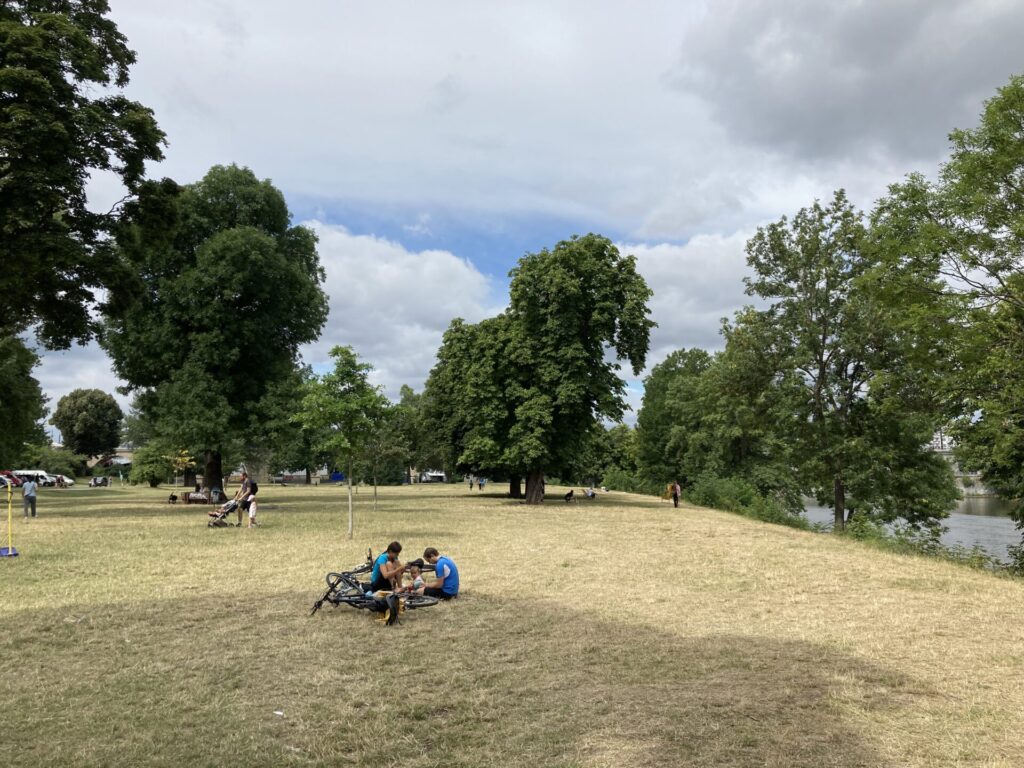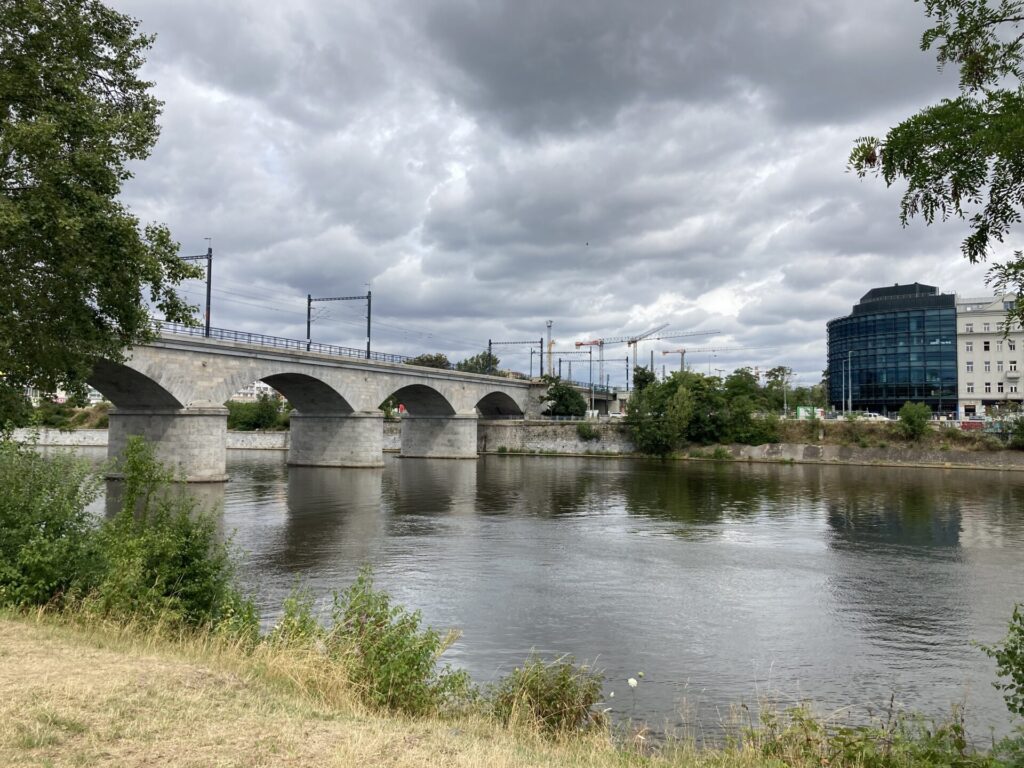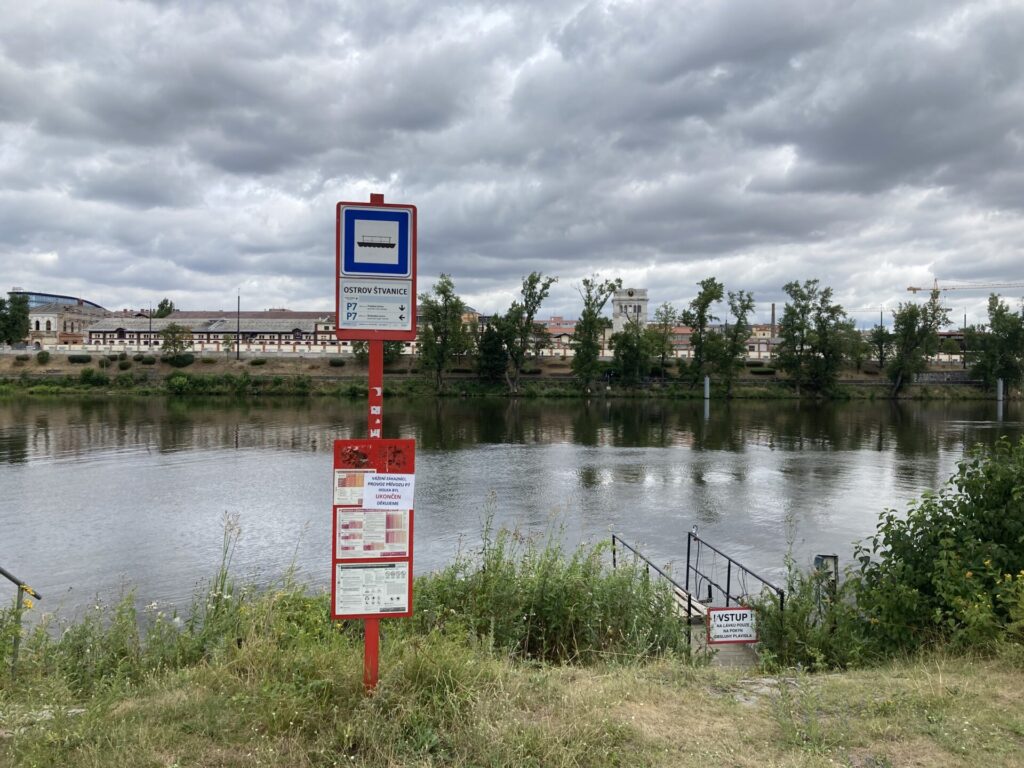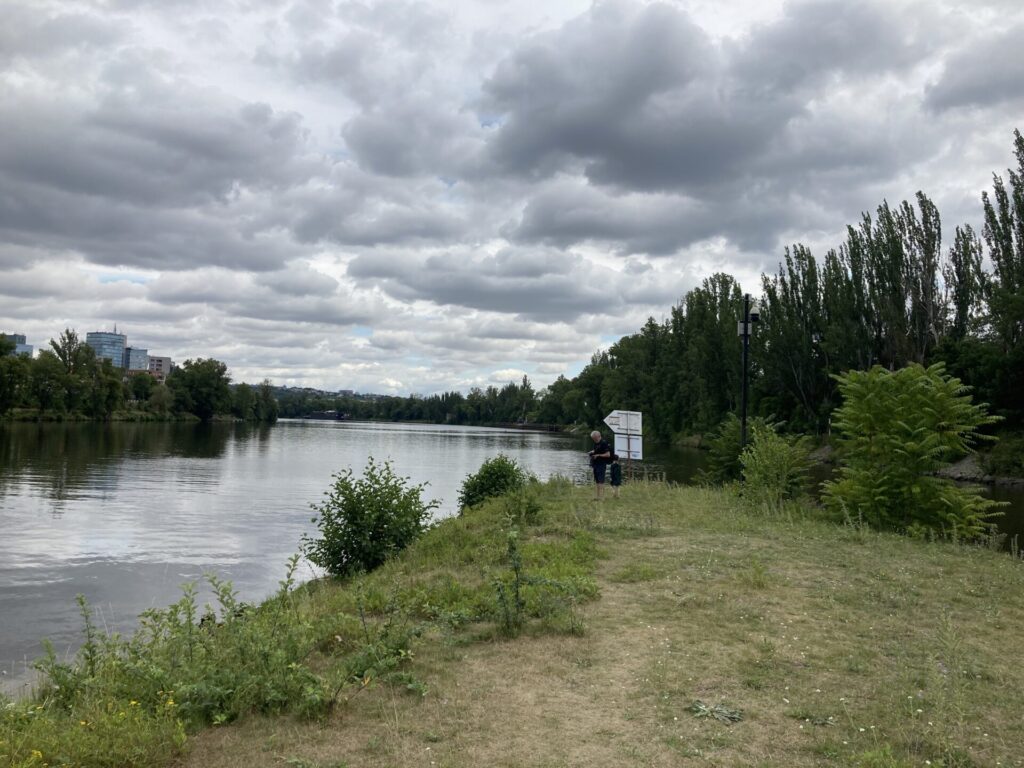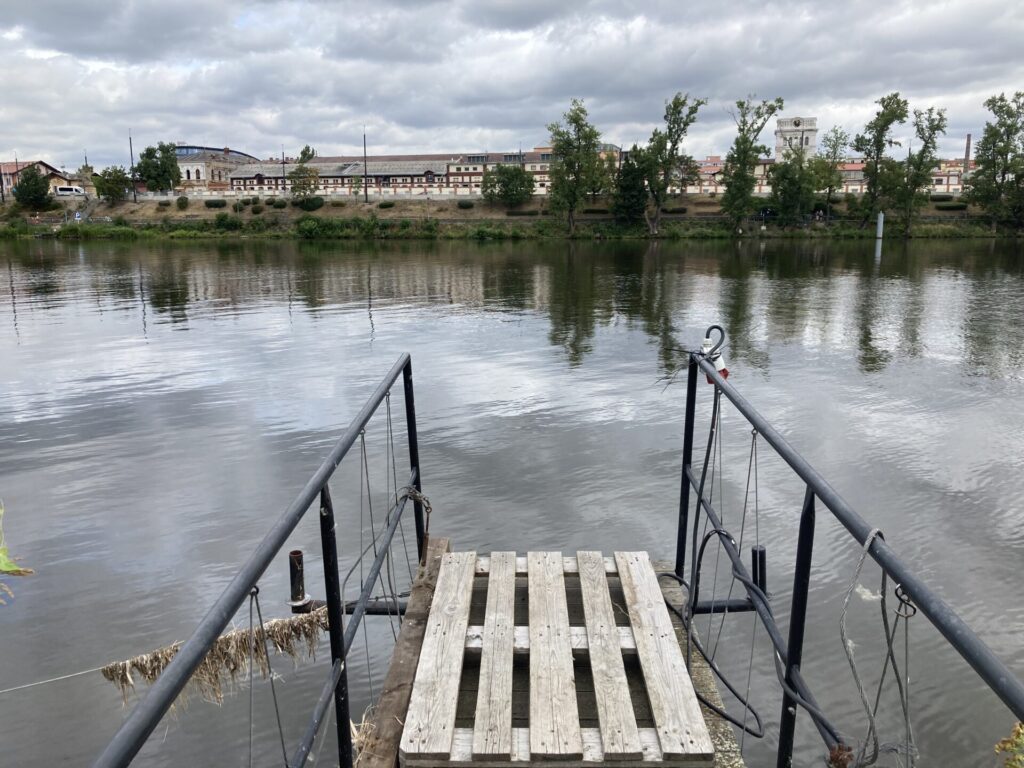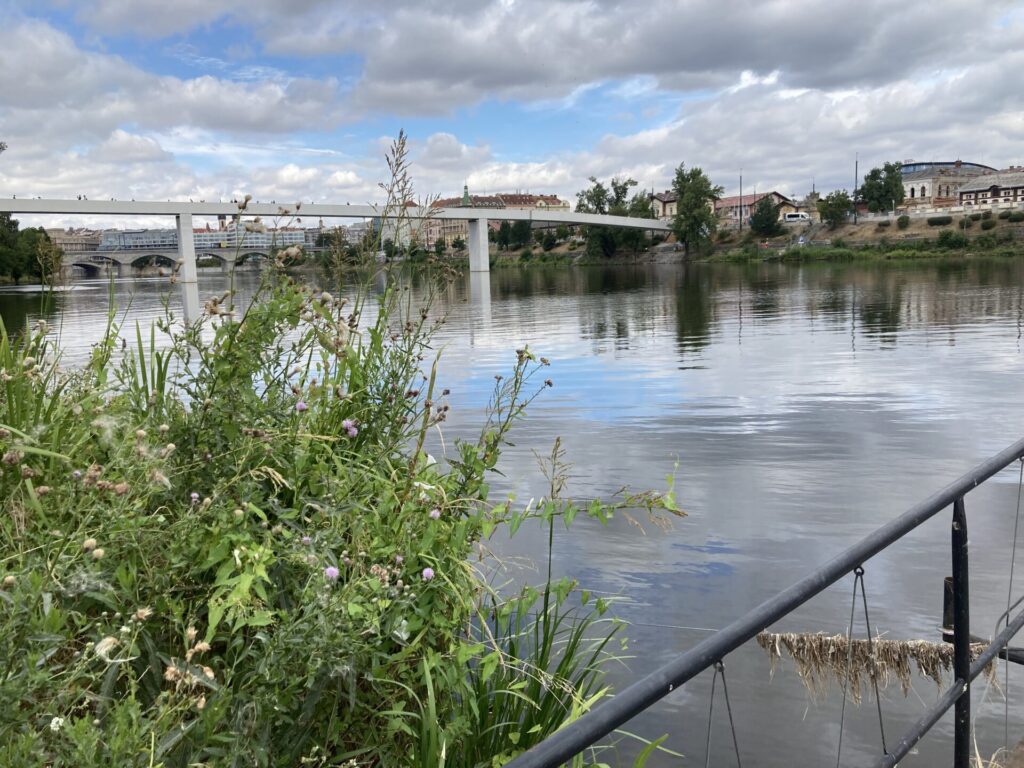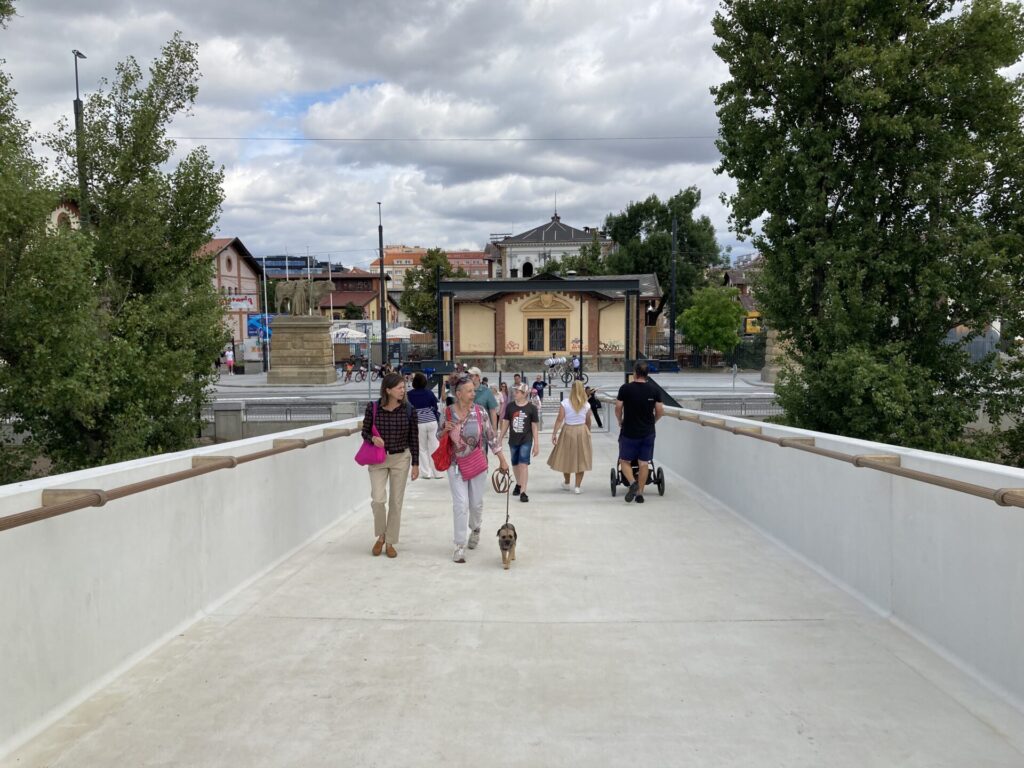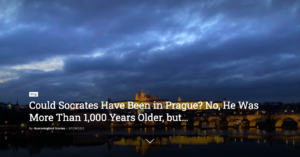The very first bridge on the territory of Prague was probably the wooden bridge in Klárov, where the very first house in Prague once stood. However, we are talking about the very distant past, the 10th century to be precise, so we don’t really have any photographic evidence. Today, there are a total of 600 bridges in Prague, including the smallest footbridges – these are bridges owned by the city. Private ones are not included in this number.
Until recently, nineteen of those large bridges spanned the entire width of the Vltava. At the end of July, the twentieth bridge was added to them. It is a bridge with a funny name: HolKa. The word refers to the fact that the bridge connects the Prague districts of Holešovice and Karlín. But if you write it without capital letters, “holka” is actually Czech for “girl”.
Architects Petr Tej and Marek Blank designed the bridge as simple as possible. Their intention was “a bridge as a white subtle line that winds through the landscape”. And they obviously succeeded. The bridge has a simple elegant shape, is bright white, and because it is painted with anti-graffiti paint, it will maintain its innocent whiteness.
The bridge is directly connected to the terrain, there are no stairs leading to it. There are no lamps on it. The LED lighting strips are incorporated into the bronze railing, which is topped with animal heads. There are horse heads on the Karlín side, hares on Štvanice Island and bulls in Holešovice. Its simple whiteness and bronze colored railings might make you think back to the togas of Ancient Rome. This is no accident as the architect Petr Tej did comment that creating a connection to Ancient Rome for those crossing over was the intention.
Part of the bridge is also an abstract sculpture called “River” by sculptor Jan Hendrych, which stands to the side of the bridge, which you can go past on your way down to Štvanice Island: “The sculpture was created as an idea of a river that is not as clear as a stream, but is already distorted by dams and other civilizational devices.”
The construction of the bridge is segmental, there are 50 segments, each 6 meters long; the bridge is 300 meters long. The material used is noble concrete, referred to as UHPC (ultra-high-performance-concrete), with a shiny white marble surface. HolKa is the first structure of its size in Europe this material was used. The advantage of this material is that it should last for 200 years without maintenance.
From an engineering perspective, the design of the bridge on the Holešovice side is also quite interesting. The last segment of the bridge can be raised by several metres in the event of a flood, so that the water can flow easily and not destroy the bridge as happened to the Charles Bridge in the 1890 flood.
Charles Bridge during the flood of 1890. The rough water brought so many logs and other timber that the river clogged and as a result several arches of Charles Bridge were broken (this was also helped by the fact that Charles Bridge had the narrowest gaps between the pillars of all Prague bridges). *
By the way – if you want to go see the bridge, you can combine several pleasant experiences. Start in Karlin by visiting the Church of Saints Cyril and Methodius. Then you can grab coffee or dinner nearby – in 2002, Karlín was the most affected by the flood of all Prague districts, but paradoxically it benefited it. What was originally a relatively neglected district is now a rapidly developing part of the city, with many new apartments, offices, but also renowned cafes and restaurants.
Then you can cross the bridge to Štvanice Island and relax for a while.
On the Holešovice side of the bridge, you will see the entrance to the Holešovice Market directly in front of you. In one of the halls, the multi-functional space Jatka78 (Slaughterhouse78) is located, where dance and drama performances as well as the impressive new circus take place.
By the way – why is it called Jatka78? The theater is located in the buildings of the market hall number 7 and 8, which was originally a real slaughterhouse for almost a hundred years – that’s why local theater actors have a stylized pig’s snout in their logo.
Their performances are great, so if you like theater, you can end a nice day there.

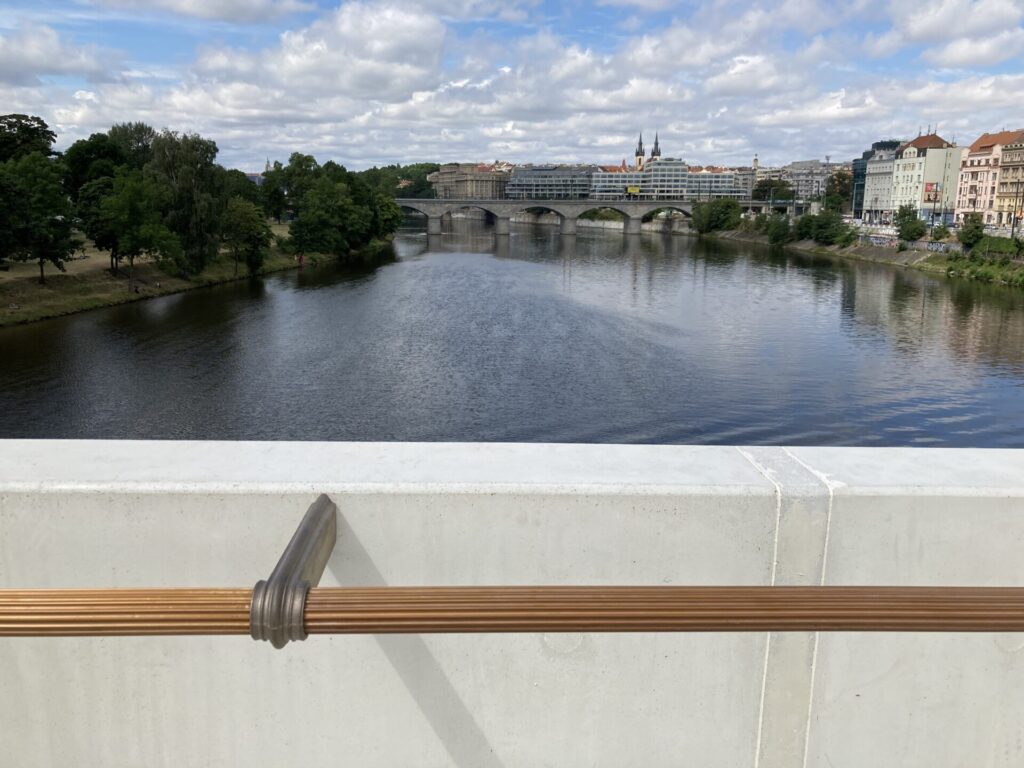
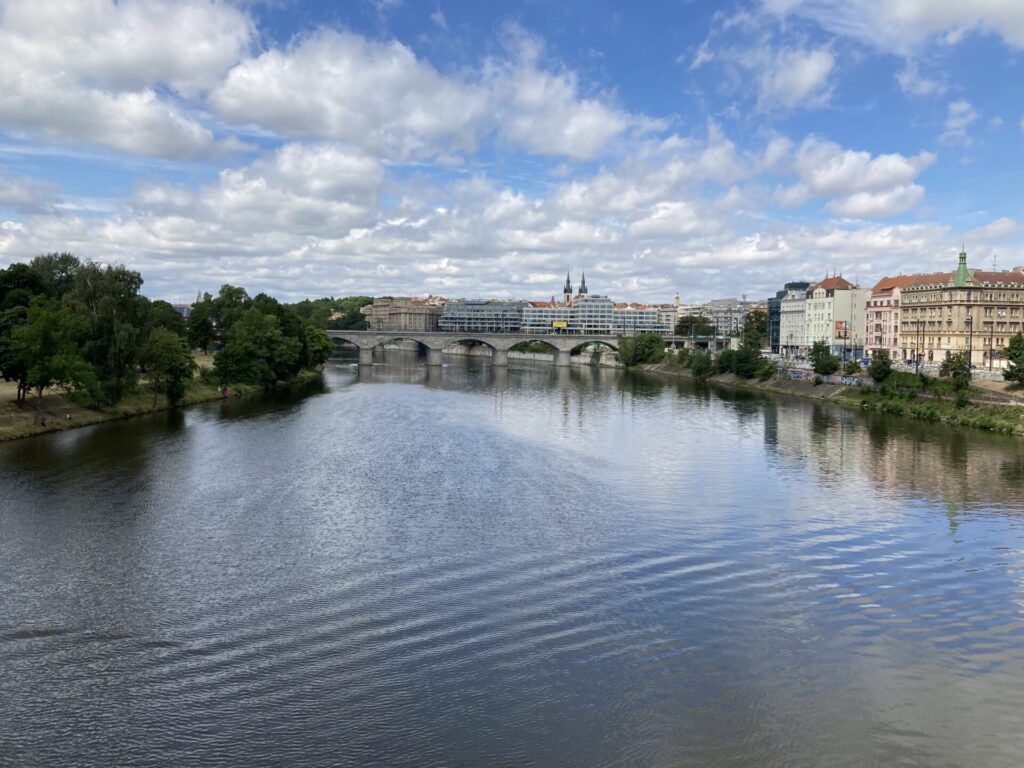
* A similar threat occurred in 2002, when during a flood, 100 times more water flowed in the Vltava than in normal conditions. At that time, there was an excavator standing on the Charles Bridge, who used his bucket to direct incoming objects between the bridge pillars, possibly breaking them up so that they would float through and not damage the bridge.And since humor helps best in emotionally challenging moments, “flood humor” was quickly created:
Three architectural landmarks in one photo. In the foreground is the Negrelli Viaduct, the oldest railway bridge in Prague. With a length of 1120 meters, it was the longest bridge in Europe until 1910.
Behind it you can see one of the landmarks of Prague, called the “tile factory”. That is, a functionalist building that was built as the headquarters of the Prague Electrical Company. During the Second World War, its snow-white tiles were painted black to make the building invisible to bomber pilots.
Behind this elegant building, the towers of the Church of St. Anthony of Padua peek out on Strossmayer Square.
I am selling a cottage. The swimming pool is right next to the cottage, you can fish from the terrace. It was originally in southern Bohemia, today you can see it in Prague, tomorrow it will be in Germany.
The Prague City Hall voted to abolish the city police. It will be substitute by the Coast Guard.
News from the Prague City Hall: all 18 flooded metro stations will be renamed Vltavská.
Traffic announcement for boaters: all roads in the center of Prague are passable for boats today.













